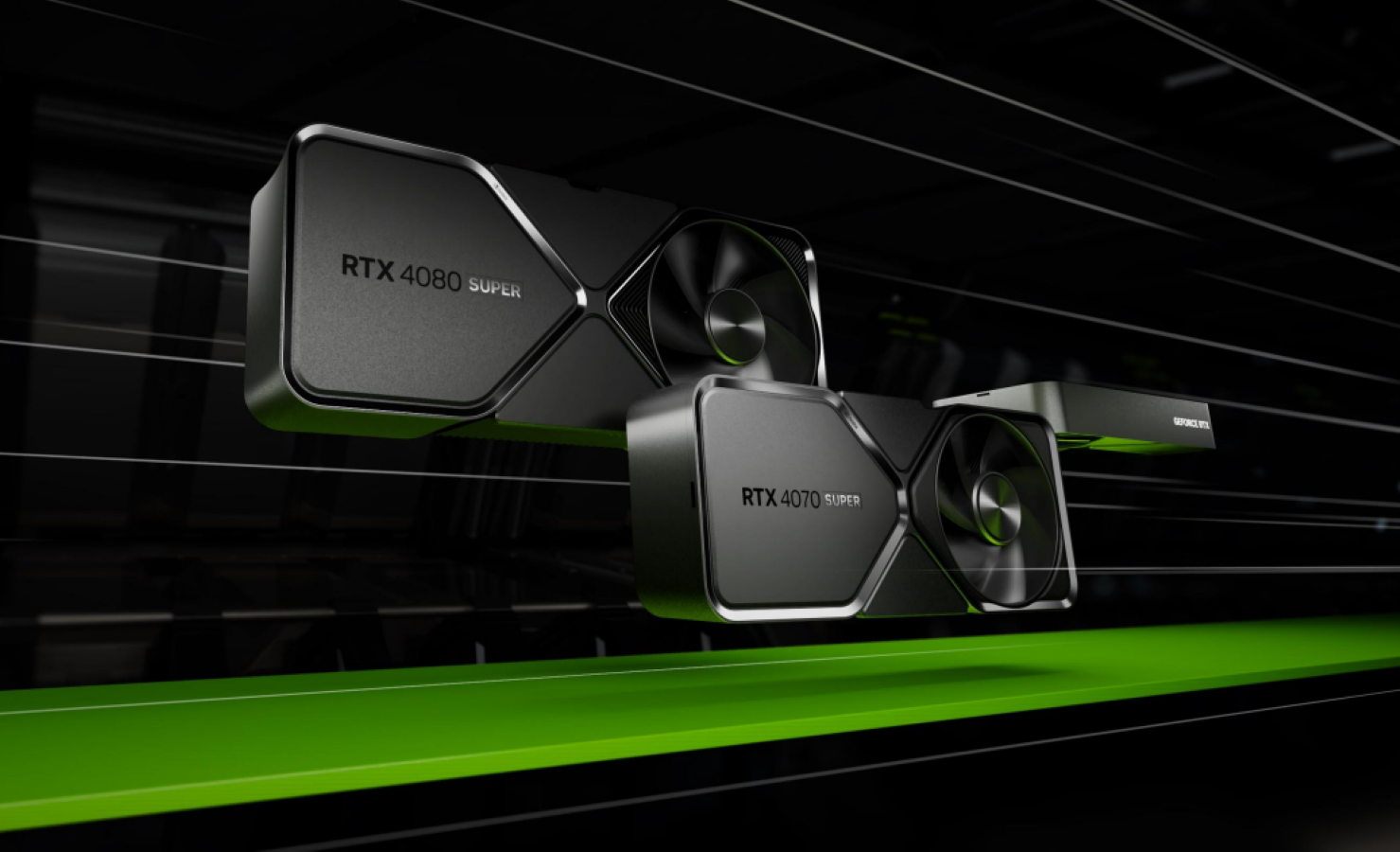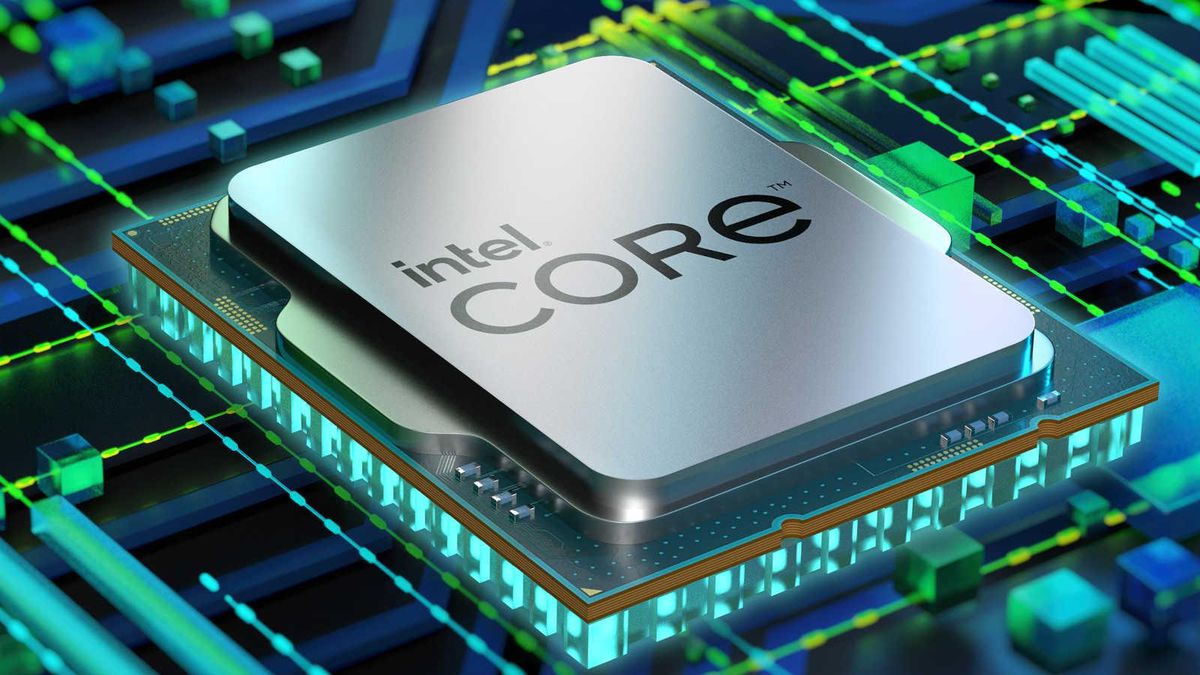Nvidia unveiled a trio of new RTX 40-series “Super” graphics cards during its CES 2024 virtual keynote Monday morning. Nvidia introduced the Super branding for the RTX 20-series, and these new ones match their predecessors in more than name. Like the RTX 20-series before it, the RTX 40-series is a fantastic reset for Nvidia’s modern GeForce lineup often bemoaned for its lack of value.
The GeForce RTX 4070 Super, RTX 4070 Ti Super, and RTX 4080 Super each boast very different alterations, but each fixes the most significant drawbacks of their non-Super namesakes. These Super GPUs are what the RTX 40-series should have been from the get-go. Let’s dig in.
Nvidia GeForce RTX 4080 Super

Nvidia
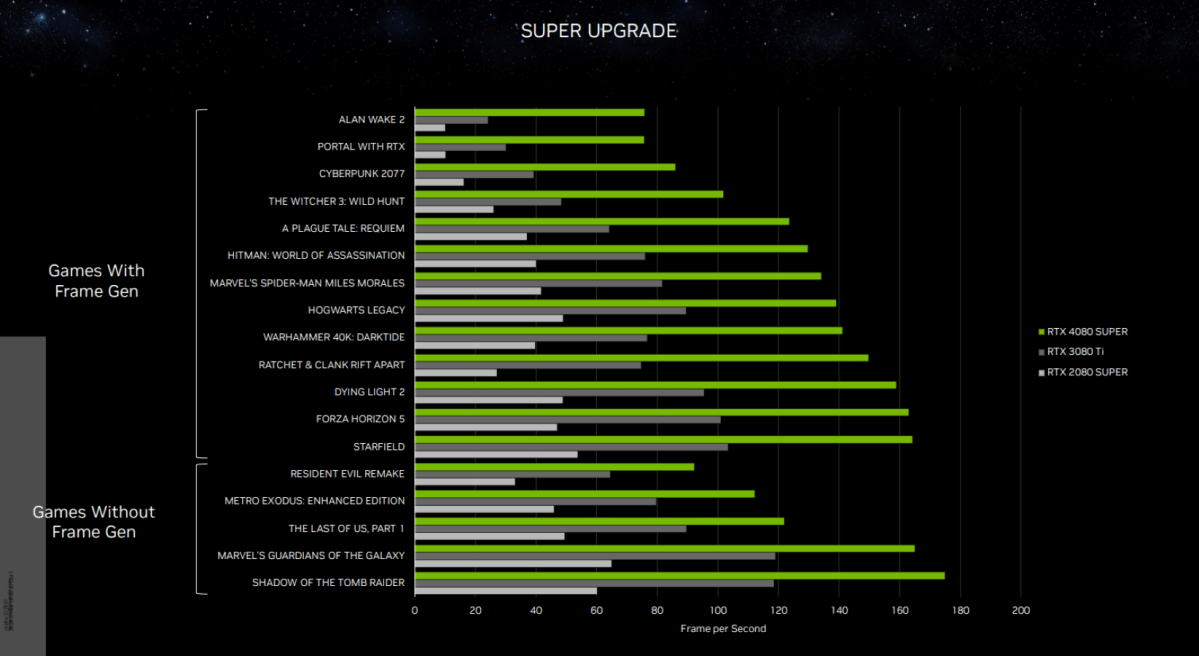
Nvidia
The most ferocious Super upgrade of the bunch is actually the most modest. The original $1,200 GeForce RTX 4080 was built around Nvidia’s “AD103” GPU die with two SM clusters disabled. (Think of SMs as the building blocks of GeForce GPUs, with each housing a set number of CUDA cores, ray tracing cores, etc.) The RTX 4080 Super enables those last two SMs, as well as faster 23Gbps memory, delivering performance 2 to 3 percent faster than the original 4080 in most circumstances.
That’s kinda ho-hum. So, what’s the big deal? The price. The original RTX 4080 cost a chest-clutching $1,200, instantly earning our ire despite its ferocious capabilities. The GeForce RTX 4080 Super will cost $999 when it launches on January 31. That’s still the official MSRP of AMD’s rival Radeon RX 7900 XTX, and at the same price, AMD’s GPU no longer makes Nvidia’s look silly. I can’t wait to get this puppy in my test bed. (Note that all Nvidia-supplied performance charts in this article include games with a mixture of DLSS, ray tracing, and DLSS 3 Frame Gen enabled.)
Nvidia GeForce RTX 4070 Ti Super
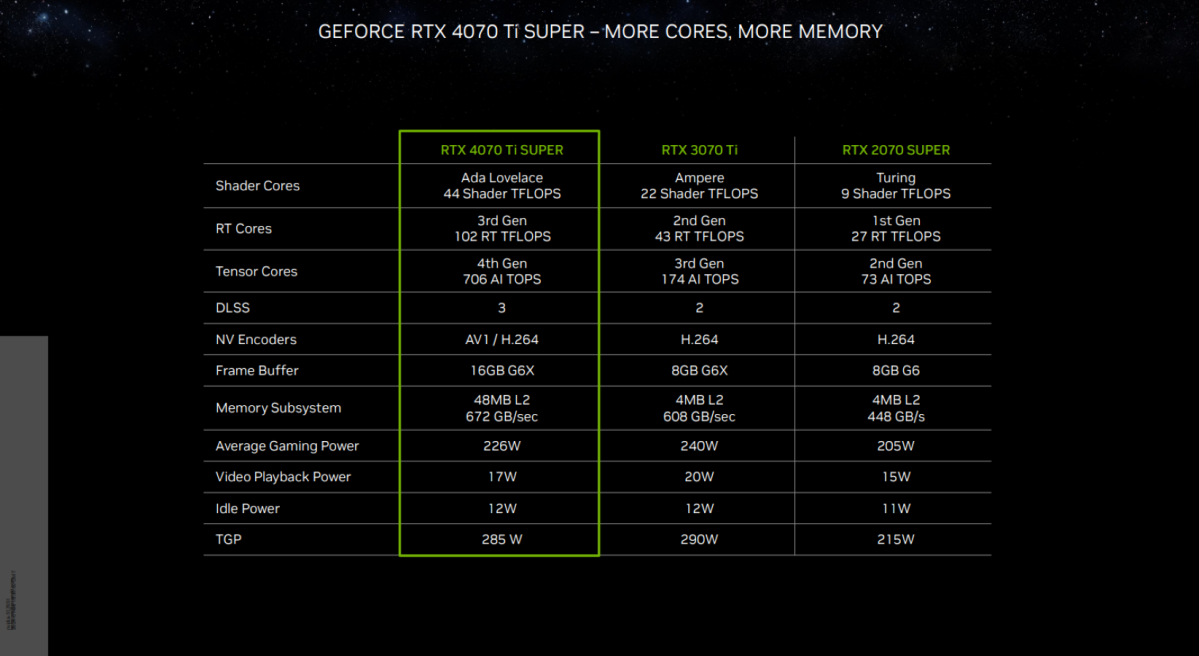
Nvidia

Nvidia
Speaking of things I can’t wait to test out, enter the GeForce RTX 4070 Ti Super. It launches at the same $799 price as the non-Super version, albeit with a sillier name. But once again, Nvidia fixed the worst problem with the original 4070 Ti with this Super update: Its memory configuration.
The 4070 Ti earned my worst review score of 2023 along with a firm tongue-lashing thanks to its combination of a sky-high price with a neutered 192-bit memory bus that made it poor for 4K gaming.
“At $799, the GeForce RTX 4070 Ti costs $100 more than last generation’s stunning RTX 3080—and it’s a lower-tier GPU,” I wrote. “It’s $200 more than the already-overpriced RTX 3070 Ti was. In exchange for that 14 percent price hike over the 3080, you usually get a stagnant 14 percent more performance than the 3080 at 4K, or roughly 20 percent faster speeds at 1440p. Nvidia cut the 4070 Ti’s memory bus back to RTX 3060 levels which slows it down at 4K. That’s flat-out unacceptable in a $799 graphics card.”
Nvidia didn’t touch the price with the RTX 4070 Ti Super, but it fixed the gruesome memory issue by swapping in the AD103 GPU originally earmarked for the 4080. With it comes not only a welcome 10 to 11 percent performance uplift over the vanilla RTX 4070, but also a beefier memory subsystem. The RTX 4070 Ti Super upgrades to a 16GB of VRAM capacity (up from 12GB) and, better yet, a 256-bit memory bus (up from 192-bit).
That means it should handle both 1440p and 4K gaming very well when it launches for $799 on January 24. Again: If Nvidia wants to charge $799 for a graphics card, this is what it should’ve been to begin with.
Nvidia GeForce RTX 4070 Super
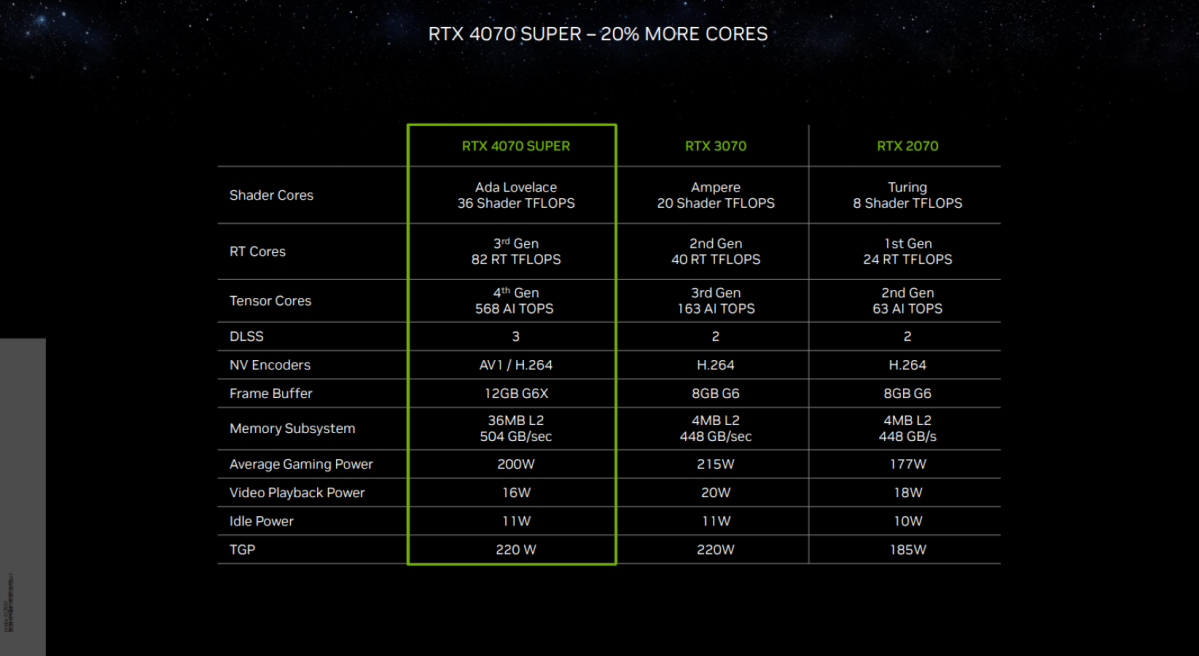
Nvidia

Nvidia
First (since it launches on January 17) but certainly not least, the $599 GeForce RTX 4070 Super carries the same price tag as its predecessor yet the biggest performance bump of them all. Nvidia infused this Super-fied 4070 with 20 percent more CUDA, ray tracing, and RT cores, which should provide a corresponding (though not universal) performance boost in many games.
The powerful yet power-efficient RTX 4070 was one of the highlights of the original RTX 40-series lineup, even though we thought it was priced too high. The Super’s juicy performance bump will no doubt temper that concern somewhat. Nvidia’s Brandon Bell told me that the new 4070 Super uses a “nearly” perfect version of the AD104 GPU, which helps it land just 5 percent behind the performance of the original non-Super RTX 4070 Ti. Doing so requires more juice, of course, so the 4070 Super moves to a 16-pin power connector and comes rated for 220 watts of total graphics power.
Bumping the RTX 4070 Super the most is a smart move by Nvidia. In this price segment, the $500 Radeon RX 7800 XT reigns supreme, sometimes besting the $600 RTX 4070 Super by 15 – 20 percent. This Super tweak will likely narrow (or eliminate) that gap, while Nvidia can pitch the advantages of software features like DLSS 3, Frame Gen, and the AI-powered Nvidia Broadcast on why the Super still costs a premium over its AMD rival.
What about the non-Super GPUs?
Both the original GeForce RTX 4080 and 4070 Ti will be phased out, replaced wholly by their Super replacements.
The non-Super GeForce RTX 4070 will continue to stick around at a new, lower $549 price. That doesn’t seem like it’ll be very compelling between the $500 Radeon RX 7800 XT and $600 RTX 4070 Super, but Nvidia stressed that the $549 is just official pricing – on the streets, I wouldn’t be surprised to see vanilla 4070s going for $500 or less before long, giving its Radeon rival a true run for its money.
Trending for you

- Best laptops 2024: Premium laptops, budget laptops, 2-in-1s, and more
- The best graphics cards 2024: GPUs for every budget
- Best Thunderbolt docks 2024: Extend your laptop’s capabilities
Bottom line: We won’t know for sure how Nvidia’s new RTX 40-series Super cards handle until they’ve crossed independent test benches. But on paper, they look pretty, pretty, pretty good.

